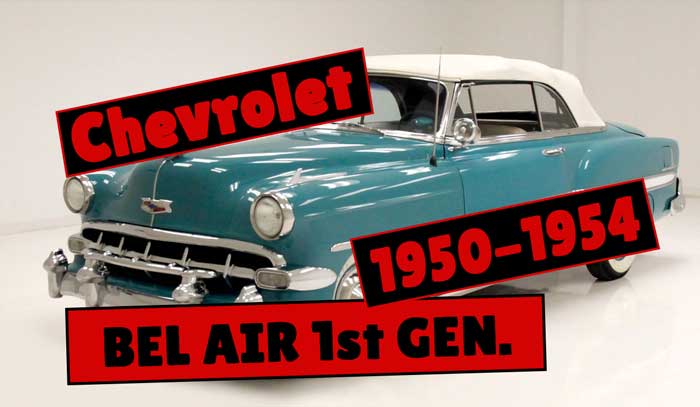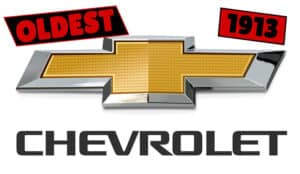Chevrolet Bel Air 1st Generation Origin
The Chevrolet Bel Air is a full-size automobile produced by Chevrolet between 1950 and 1957. The Bel Air name was initially a designation for a hardtop with two doors in the model range of the company. In 1953 however, the name went on from being just a designation given to a body shape to a high-level trim with various body styles. It was a budget fleet sedan by 1975 with the cessation of production in the US.
Between 1950 and 1952, in order to separate the two-door hardtops in the Chevrolet model range from the Fleet line and Styline models, the Bel Air Sport Coupe name was given – a name adopted from the Westside of Los Angeles.
The first-generation Bel Air was 3,225 lb (1,463) in weight and it was produced between 1950 and 1954. It had an independent front suspension which was known as “knee-action”. The predecessor to this model was the Chevrolet Fleetline, and its successor was the Chevrolet Impala. Among the features that this range of automobiles had in common with other Chevrolet models was the front sheet metal which was ahead of the A-pillar.
Stay with me till the end, and you will more amazing facts about this super classic ride
Chevrolet Bel Air 1st Generation Overview
Although the rear windows, roof, and rear quarters were unique, its doors, glass, trunk, and windshield were the same ones that were used in the Styline DeLuxe Convertible Coupe.
Its general appearance was the same as the rest of the model range and it had the same chassis and mechanicals as the other range of passenger cars.
The appearance features that distinguished the Bel Air from others in the model range were the lower roofline and the three-piece rear window which made the car look longer and more balanced. The very first versions of Bel-Air came in a premium level “DeLuxe” trim and specification.
Chevrolet changed its trim and grille in the Bel Air on an annual basis. The 1951 and 1952 models introduced higher and squarer rear guards in the entire range – a feature that was not included in the 1950 model.
By 1953, only the premium model range in the company’s series retained the Bel Air name and the lower series were given a new name. Lower series like the Special series was replaced with the 150 while the Deluxe series was replaced with the 210. The styles of the body panels as well as the front and rear ends of the 1953 Chevrolet were different from the older versions.
The 1953 Chevy also came with a facelift. The pre-war torque tube drive, 6-cylinder splash feed engines, knee-action suspension, and split windshields that the earlier models used were replaced, setting the stage for the first Chevrolet post-war passenger car.
One of the features of the Bel Air series was that the rear fender had a wide chrome strip of molding that bulged out to the rear bumper. The strip had a “Bel-Air” script on it.
The interiors of the Bel Air were characterized by a deluxe Bel Air steering wheel with a full chrome horn ring and a large expanse of chrome running across the lower part of the dashboard. Standard equipment in the Bel Air was its carpeting and full wheel covers.
Chevrolet Bel Air 1st Generation Engine
The first-generation Chevrolet Bel Air used two engines. The first was a 216.5 cu in (3.5 L) “Thrift master” Chevrolet Stove bolt 1-bbl. a valve-in-head engine that generated 92 hp. The second was a 235.5 cu in (3.9 L) Blue Flame I6 cylinder OHV engine. The 1950 to 1954 automobile versions also featured a 3-speed manual transmission and 2-speed power glide automatic transmission.
Chevrolet Bel Air 1st Generation Production
During the first year of production, this classic sensation saw quite a good number of units produced. A total of 76,662 units were recorded to have been tagged after production. Which would be considered quite a lot when compared to other counterparts.
Chevrolet Bel Air 1st Generation Price
Chevrolet has always been known to not be a cheap whip. As of the year of production, this super classic was estimated to cost $1741, which in our today’s market would average $20,567.55. That’s quite a sum for what is what.
That’s all for today guys. I’m sure you loved this article, so hit that share button, and stay tuned for more classic car articles.




